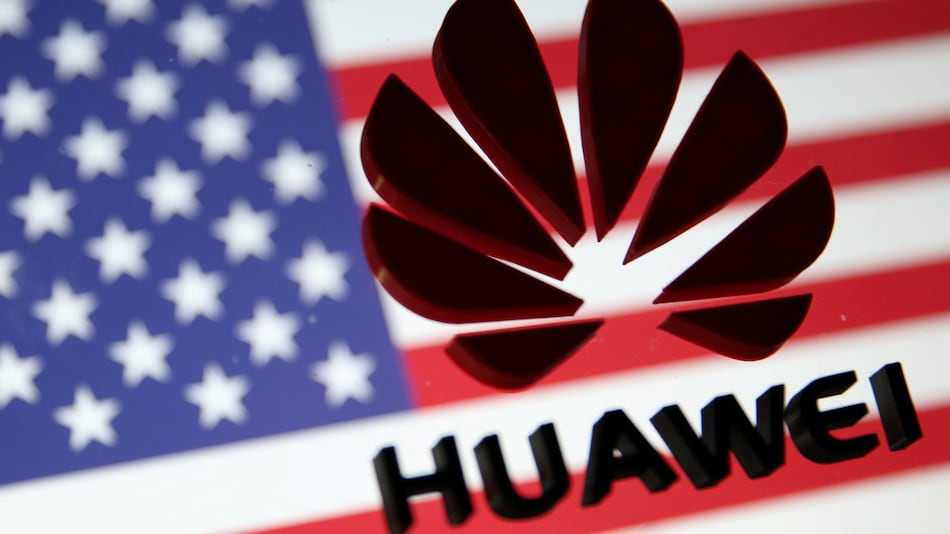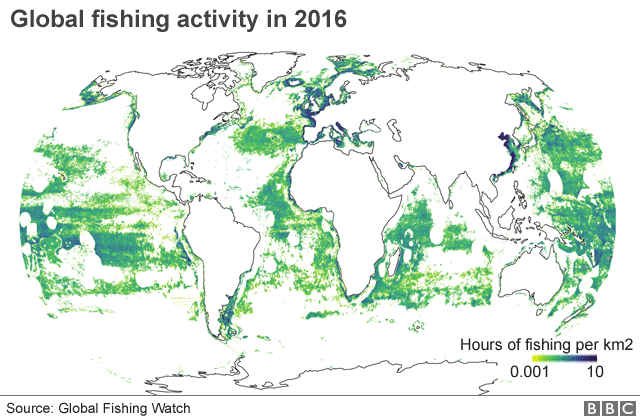
Computers have crunched 22 billion identification messages transmitted by sea-going vessels to map fishing activity around the globe.
The analysis reveals that more than 55% of the world’s oceans are subject to industrial exploitation.
By area, fishing’s footprint is now over four times that of agriculture.
That’s an astonishing observation given that fisheries provide only 1.2% of global caloric production for human food consumption.
The investigation shows clearly that the biggest influences on this activity are not environmental – whether it is summer or winter, or whether there is an El Niño or fish are migrating, for example.
Rather, the major controlling factors are very largely political and cultural.
“You’d think that fishing activity would follow some natural pulse of the seasons, but in fact that’s secondary to whether it’s a weekend or not, or whether there’s a moratorium, or a public holiday,” says David Kroodsma from Global Fishing Watch, which led the study published in Science Magazine.
“Because fishing is an industrial activity tied to politics and culture, this is actually a positive message because it shows we have a lot of human agency in the way we fish the oceans, and it’s entirely within our power to change things,” he told BBC News.
- ‘Fishing continued’ at China oil spill site
- Satellite system targets ‘dark fish’
- Will Big Data lead to Big Brother?
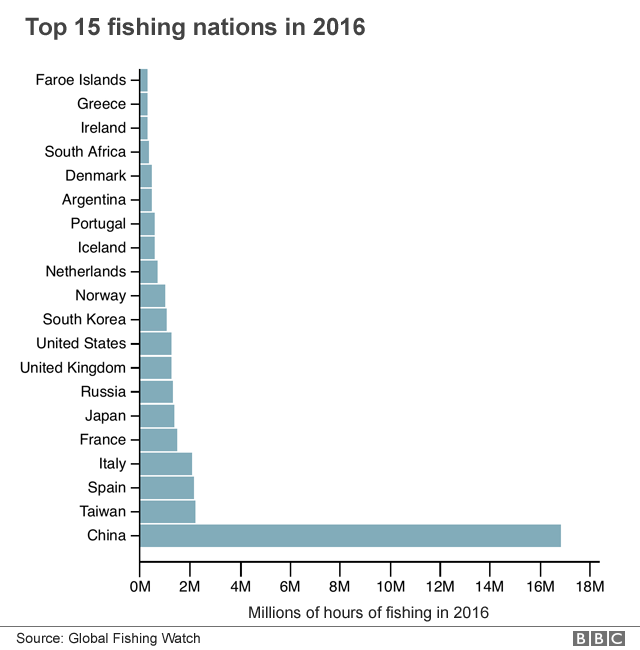
Kroodsma and colleagues have been playing with the data coming from the transponders that all large vessels are now mandated to carry.
This Automatic Identification System (AIS) means each boat will push out information every few seconds about its position, course, and speed.
These messages can be detected from space by satellites, and recent years have seen increasing numbers of spacecraft launched just to track what’s happening on the high seas.
Kroodsma’s team looked at the data from 2012 to 2016. It encompasses the messages from over 70,000 vessels. That’s far too many boats and too much data for individuals to comb through. So, the team has trained algorithms to do the work instead – to recognise in the movement of the vessels behaviours such as whether they actually have gear in the water and what sort of gear that might be. Nets or longlines, for example.
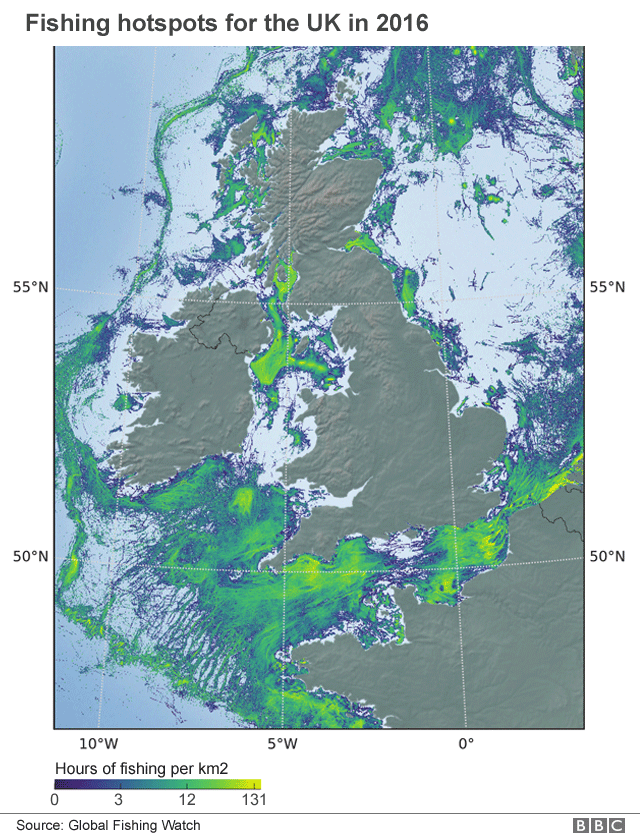
The team is able to produce “heat maps” to illustrate where fishing activity is most intense – such as in the northeast Atlantic and northwest Pacific, as well as in nutrient-rich regions off South America and West Africa.
Remarkably, it is the fleets from just five countries (China, Spain, Taiwan, Japan, and South Korea) that account for more than 85% of observed fishing effort on the high seas, ie away from their exclusive economic zones.
The team says that over the course of the study period, the analysis recorded over 37 million hours of fishing.
In that time, vessels consumed 20 billion kilowatt hours of energy and travelled a total of more than 460 million kilometres.
That’s 600 times the distance to the Moon and back.
Longline fishing in the open ocean, for species such as tuna, shark and billfish, was the most widespread activity globally, detected in 45% of the ocean.
“What’s most exciting is what comes next,” says David Kroodsma.
“We can now ask questions that we have the data to answer. Where are different species at risk because of bycatch? Because you can now see the overlap between species’ ranges and fishing effort.
“Or, how do subsidies affect fishing? Or, do fisherman respond more to [fuel] prices than to some type of regulation?
“Or, what parts of the ocean need more protection? We can now have much more informed discussion.”
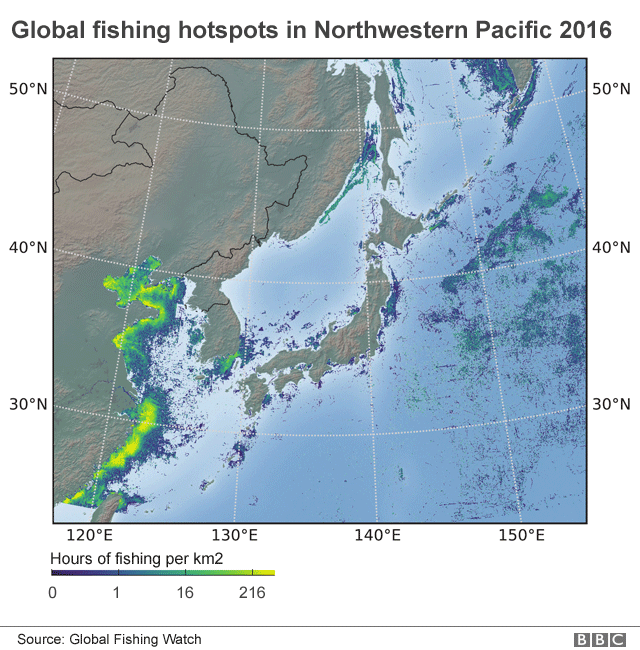
What the team has produced is not a complete picture simply because AIS is not on every boat. The smallest vessels do not have to carry it, and of course for those that do – but wish to hide their illegal activity – they can switch it off.
But the analysis captures the majority of activity, and on the high seas, where only the largest vessels operate, it is probably missing very little.
Commenting on the study, Elvira Poloczanska, from the Alfred Wegener Institute in Bremerhaven, Germany, said AIS had become a powerful new tool.
“Emerging applications of AIS data include fleet and cargo tracking, national fishing fleet monitoring, and maritime security,” she told Science Magazine.
“For example, AIS data is yielding information on maritime trade routes and shipping corridors and on trade flows for decision-making, enabling assessments of the contribution of ship exhaust emissions to air pollution, and allowing reduced fishing activity in the exclusive economic zones of many island states – information relevant to conservation planning.”
Global Fishing Watch has all the data from the study available for download. It can also be accessed through the Google Earth Engine.
source:-BBC



